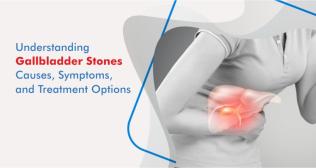
Robotic-Assisted Surgery: The Evolution of Robotic Surgery
Robotic surgery, or robot-assisted surgery, represents a minimally invasive surgical method where highly advanced robotic systems aid surgeons in performing procedures. During robotic surgery, surgeons operate robotic arms outfitted with specialized instruments and a camera from a console. This setup offers a detailed, magnified, and three-dimensional view of the surgical area, enabling precise and controlled maneuvers.
Advantages of Robotic Surgery
Enhanced Accuracy and Precision: Robotic surgery provides enhanced dexterity and precision during surgical procedures compared to manual techniques, enabling surgeons to execute intricate movements with greater accuracy.
Minimally Invasive: Robotic surgery involves smaller incisions compared to traditional open surgery, resulting in less trauma to surrounding tissues, reduced blood loss, and faster recovery times for patients.
Visualization: Robotic systems offer surgeons an amplified, high-resolution, three-dimensional perspective of the surgical area. This improved visualization allows surgeons to discern intricate anatomical details with greater clarity, aiding in precise tissue manipulation and stitching.
Evolution of Robotic Surgery
The debut of the PUMA 560 in 1985 marked the inception of robotic surgery, focusing on minimizing surgical movements, while the integration of laparoscopic technology in the 1990s led to the development of systems like da Vinci, ROBODOC, AESOP, and Zeus, revolutionizing surgical procedures.
Da Vinci X Surgical System
In the 2010s the most prevalent robotic surgical system is Da Vinci X Surgical System. The FDA approved the da Vinci Surgical System for general laparoscopic surgery in 2000. It gives the surgeon the most advanced instruments to perform minimally invasive and accurate surgical procedures. The surgeon is seated on the console and guides the robotic arms to perform the surgery in real-time, it is almost like augmented reality. It gives the surgeon a 3D high-definition view of the surgical area.
Examples of Robot-Assisted surgical procedures
- Robotic General and GI Surgery
- Robotic kidney, bladder and ureters surgery
- Robotic Bariatric Surgery/ Metabolic Surgery
- Robot-assisted cancer surgery
- Robotic prostate surgery
- Robotic colorectal surgery
- Hysterectomy
Categories
Clear allMeet the doctor

- General Surgery | Robotic Surgery | General Surgery | General and Laparoscopic Surgery | General and Minimal Access Surgery
- Gastroenterology and Hepatobiliary Sciences | Metabolic & Bariatric Surgery
-
25 Years
-
1200



















